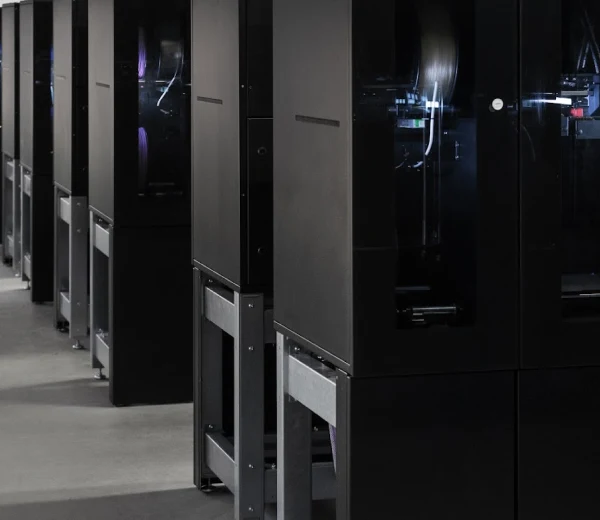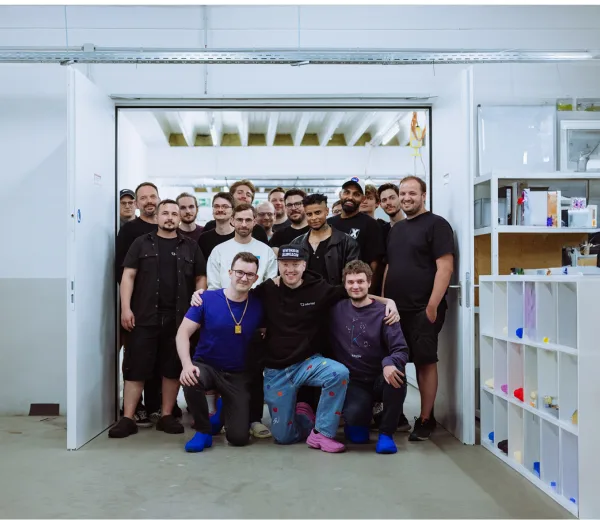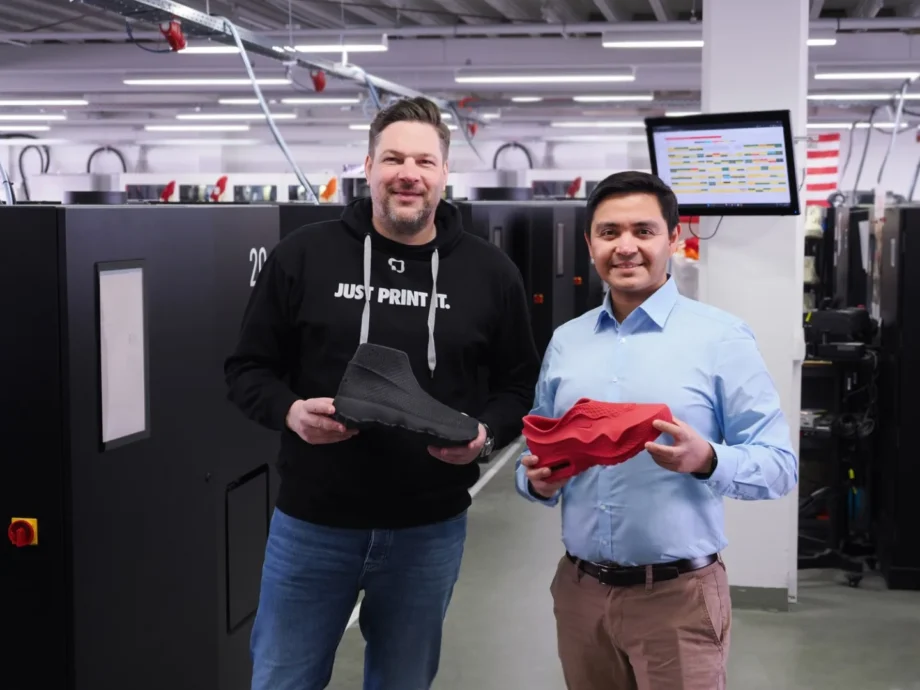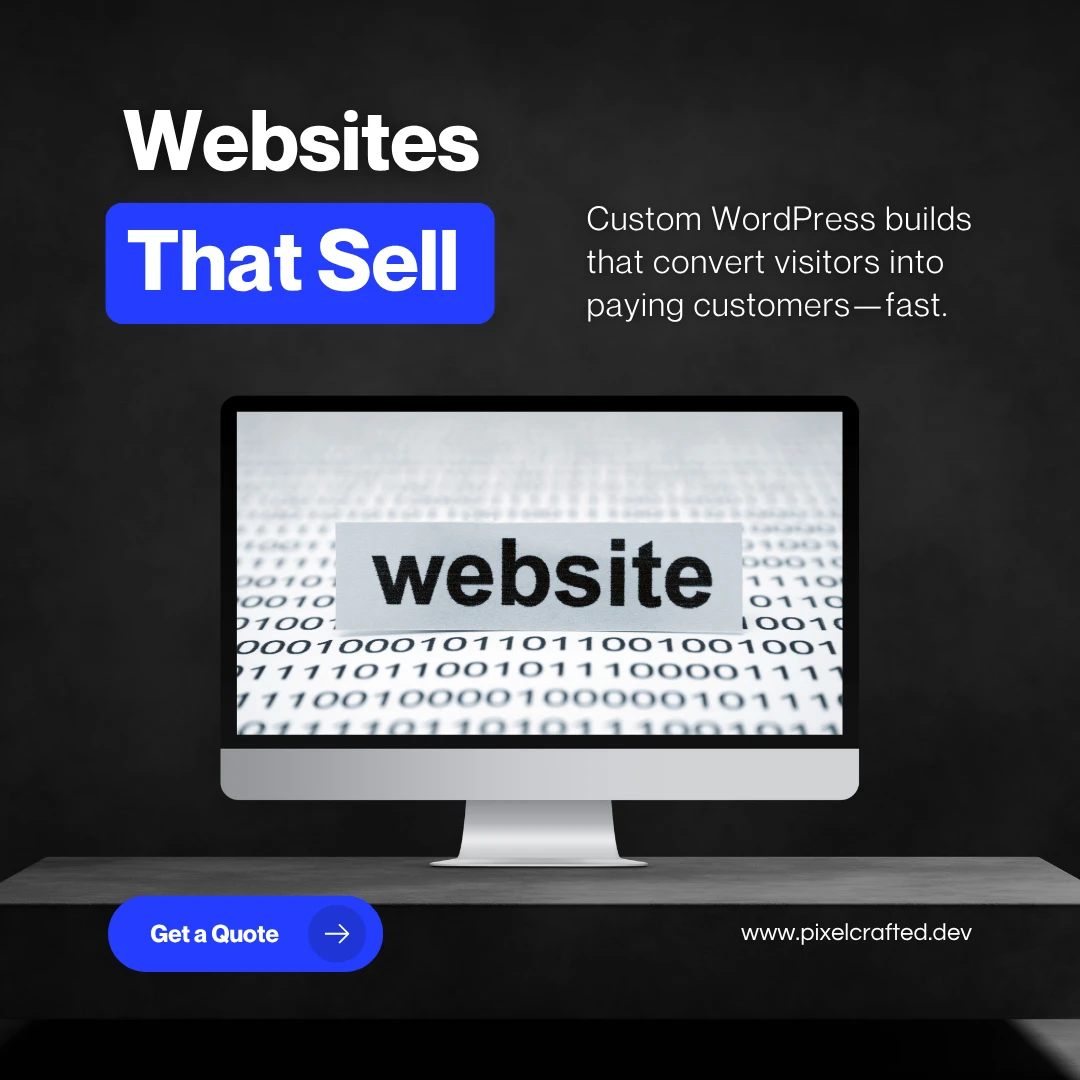How a Basement Startup Is Disrupting the $350B Footwear Industry
What started in a New York City basement is now poised to become the world’s largest 3D printed footwear factory. Zellerfeld, the startup pioneering fully 3D printed shoes, has teamed up with German research powerhouse Fraunhofer IAPT to scale from 200 printers to an astonishing 5,000—a leap that could change the future of how shoes are made, sold, and worn.
In this article, we’ll take a deep dive into Zellerfeld’s journey: from its founding mission and unique technology to the game-changing partnership with Fraunhofer that will enable global scalability. We’ll also explore how personalized design, sustainability, and additive manufacturing converge to create an entirely new category in footwear.
Zellerfeld’s Vision – Redefining How Shoes Are Made
Traditional footwear manufacturing is riddled with inefficiencies: mass production creates oversupply, limited sizing results in poor fit, and multiple materials make recycling nearly impossible. Zellerfeld’s founders saw an opportunity to overhaul this outdated system.
From day one, their mission was clear: create fully personalized, on-demand footwear through 3D printing.
The Innovation:
- One-piece 3D printed shoes: No stitching, gluing, or assembly.
- Personalized fit: Shoes are generated from digital foot scans.
- On-demand production: Every pair is made to order, eliminating excess inventory and waste.
Zellerfeld began with just a few prototype printers in a basement workshop. With early beta testers and collaborations with designers like Heron Preston, the startup quickly gained traction for its futuristic product and sustainable model.
“We didn’t want to just tweak traditional shoes. We wanted to reinvent the entire system,” said Lennard Stoever, co-founder and CEO of Zellerfeld.

Scaling the Impossible – From 200 Printers to 5,000
Zellerfeld’s initial production lab featured around 200 custom FDM (Fused Deposition Modeling) printers, capable of producing a few hundred pairs of shoes. But demand quickly outpaced supply, and limitations became clear:
- Inconsistent output
- High per-unit costs
- Bottlenecks in manual operations
To deliver mass-market personalized footwear, Zellerfeld needed industrial-scale infrastructure. The goal? A factory with 5,000 smart 3D printers operating in synchronized harmony.
Growth Timeline:
- Basement prototypes and early beta program
- 100 printers in pilot phase
- Expansion to 200 printers with custom production software
- Partnership with Fraunhofer IAPT to reach 5,000-printer scale
Enter Fraunhofer IAPT – Engineering Zellerfeld’s Factory of the Future
To turn vision into reality, Zellerfeld partnered with Fraunhofer IAPT (Institute for Additive Production Technologies)—one of Europe’s leading experts in additive manufacturing.
Fraunhofer’s Role:
- Optimize production layout for 5,000 printers
- Design automation workflows for printer management and product handling
- Develop safety protocols (e.g., fire prevention, ventilation, zoning)
- Ensure regulatory compliance (e.g., REACH materials, quality assurance)
The collaboration’s first six-week phase yielded:
- A comprehensive space requirement blueprint
- Analysis of bottlenecks and failure points
- A scalable layout concept including office space, operator stations, and fault-tolerant clusters
This partnership is a showcase of what applied research can achieve when aligned with startup innovation,” said Prof. Claus Emmelmann, Director at Fraunhofer IAPT.
Personalization Meets Mass Production – How Zellerfeld Bridges the Gap
The cornerstone of Zellerfeld’s model is mass customization. Every shoe begins with a foot scan—via smartphone or scanner—that creates a detailed digital model.
The Digital Flow:
- Scan: Customer scans feet via app
- Design: Software adjusts fit and design in real time
- Print: Machine fabricates entire shoe from TPU
- Ship: Finished shoe is boxed and delivered
Zellerfeld’s proprietary TPU-based monomaterial is flexible, durable, and fully recyclable. Since the shoes are printed in one piece, they require no assembly and little post-processing.
At scale, the process becomes increasingly efficient. Automation allows Zellerfeld to fulfill large volumes while maintaining individualized designs—without slowing production.
Case example: A customer in Berlin scans their feet Monday. Their personalized pair is printed in Hamburg Tuesday and shipped by Thursday.
Sustainable by Design – The Environmental Impact of Additive Footwear
Conventional shoes are made of leather, rubber, foam, and textiles, assembled across continents and shipped globally. The result: enormous material waste, energy use, and landfill accumulation.
Zellerfeld tackles these challenges with an eco-first mindset:
Sustainability Advantages:
- Up to 90% reduction in material waste (no cutting or offcuts)
- Monomaterial = recyclable shoes
- No adhesives or toxic glues
- On-demand = no overproduction or deadstock
- Local production = reduced shipping emissions
As the printer farm scales, Zellerfeld is exploring a closed-loop model: send back worn shoes, shred them, and reprint new ones from the same filament.
In an industry plagued by overproduction, Zellerfeld’s circular production model is a blueprint for sustainable fashion.
What This Means for the Future of the Footwear Industry
Zellerfeld’s model represents a paradigm shift. For the first time, it’s possible to:
- Digitally design and produce fully personalized shoes
- Manufacture locally at scale
- Replace inventory with responsive, just-in-time production
Broader Implications:
- Fashion brands can explore on-demand designer releases
- Orthotics and medical wearables benefit from custom-fit
- Retailers could install scan-to-print kiosks or offer print-on-demand products
Zellerfeld’s competitors (e.g., Adidas, HILOS, New Balance) have explored components like 3D midsoles. But Zellerfeld leads in full-shoe, digital-first manufacturing.
“This is more than scaling a factory. It’s scaling a new way of thinking about products,” said Lennard Stoever.

Why Zellerfeld’s Story Is Just the Beginning
From a humble basement in New York to a partnership with Germany’s most advanced additive institute, Zellerfeld has reimagined how shoes can be made. Their one-piece printed footwear model fuses personalization, automation, and sustainability—and it’s now on the verge of global scale.
With Fraunhofer IAPT’s expertise, Zellerfeld isn’t just building a shoe factory. They’re pioneering the future of digital craftsmanship in mass manufacturing.
Will your next pair of shoes come from a 3D printer? If Zellerfeld has its way, the answer is yes.
Ready to Step Into the Future?
If you’re inspired by the future of fashion and sustainability, now’s the time to learn more. Explore how additive manufacturing is revolutionizing industries—and why Zellerfeld is leading the charge.
Sources
- Fraunhofer IAPT Official Website – https://www.iapt.fraunhofer.de
- Zellerfeld Company Website – https://zellerfeld.com
- “3D Printed Shape-Memory Footwear” – Journal of Nanobiotechnology, 2025
- Adidas x Carbon Futurecraft Case Study – 3D Printing Industry Reports
- “The Circular Economy in Fashion” – McKinsey & Company, 2024
- Interviews with Lennard Stoever & Prof. Claus Emmelmann (quoted in press releases and public statements)
- Wikipedia Entries on Additive Manufacturing and 3D Printed Footwear (accessed 2025)
FAQ
Yes. Zellerfeld’s TPU-based shoes are soft, flexible, and breathable—and made to match your exact foot geometry.
Depending on the design, a full pair can be printed in under 24 hours.
Yes. Zellerfeld’s monomaterial design makes shoes fully recyclable. Worn shoes can be returned and reprocessed.




